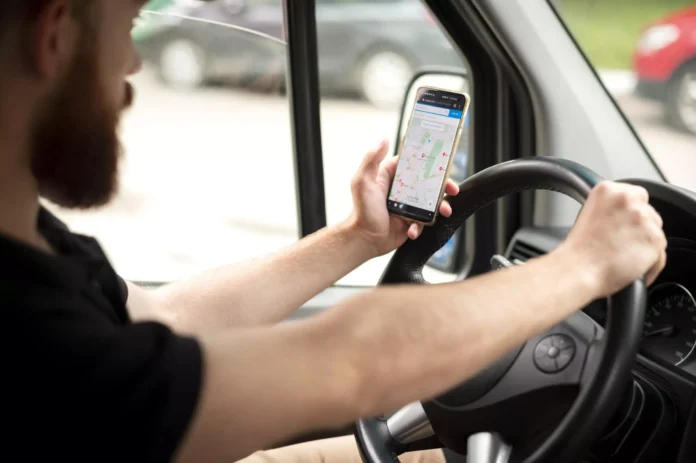If you want to make the most out of your mileage deductions, you’ll need to make sure that you maintain accurate records of your travel. This can be difficult, especially if you are a self-employed business owner, but keeping your tax returns in order is necessary. Here are some tips on maintaining your mileage deduction records:
Odometer Readings
To claim mileage on your taxes, you need to keep a mileage log. The IRS expects you to keep records that are accurate and complete.
Your mileage records will help you determine how much you can deduct for travel. You will need to record the purpose of your trip, the destination, and the total number of miles driven.
You can use a paper logbook or a digital spreadsheet. The IRS will accept various formats, including Xlsx, PDF, and CSV.
Keeping an odometer reading can help you figure out your total mileage. You may also need to record odometer readings during oil changes and vehicle inspections.
You can keep your mileage log in a notebook in your car, or you can use a smartphone app. Driversnote is a mileage-tracking app that works on Android and iOS.
You can also use a GPS device to track your mileage. In addition to keeping a mileage log, you can use a mileage rate calculator to calculate and track the miles you drive on your business trips. Both employed and self-employed individuals can use these apps.
When you take your mileage, you will need to write down the date, the mileage, the destination, and the purpose of your trip. Alternatively, you can use the “standard mileage rate” method. This method requires you to record the miles you drove, including the cost of gas, insurance, and other vehicle expenses.
Actual Expenses Method
If you have a car you use for business, you can deduct your mileage expenses from your taxes. There are two ways to do this: the actual expense method or the standard mileage rate. Each has its benefits and disadvantages. You should choose the method that is most beneficial to you.
The actual expense method requires taxpayers to keep an up-to-date log of their vehicle’s expenses. This log must be precise. It includes the date of the trip, the odometer readings, the start time, and the end time.
It also must contain all receipts for the expenses associated with the vehicle. These receipts must include the dollar amount, the service or product description, and the date. Some other types of evidence might be acceptable in some cases, but written records are usually more reliable.
The standard mileage rate is a simplified way of tracking your vehicle’s expenses. It also eliminates the need for saving gas receipts. However, it tends to understate the costs of gas guzzlers and insurance premiums.
The standard mileage rate is only used for the first year you operate. If you decide to switch to another method in subsequent years, you can do so as long as you meet specific requirements.
The IRS requires you to maintain accurate records of your mileage. It would be best to record all business trips and personal trips to avoid discrepancies.
Standard Mileage Method
You can claim a tax deduction if you own a car and use it to run your business. There are two main ways to do so. The first involves using a mileage log to track how many miles you drive in a year, and the second requires you to keep track of your actual expenses. Using either method can result in significant tax savings.
There are several advantages and disadvantages to each method. It’s essential to choose the way that best suits your situation. For example, consider using the Actual Expense Method if you have a small fleet of cars. Besides being more time-consuming to track, you’ll need copies of all the relevant documentation.
A mileage log must be accurate and detailed and include the date, start and end times, and odometer readings. You should also have information about the activity you’re deducting for.
One of the benefits of this type of mileage record is that you can easily track your trips for reimbursement. Employees who give their mileage logs to their employers do not have to keep copies of the catalog for their records. However, this makes it difficult to show that payments were made to the company rather than to you.
Another benefit of this method is that you can claim a more significant tax deduction. This is because the IRS sets a standard mileage rate every year. These rates are based on the cost of owning a car in the US. They do not include parking fees or other car expenses, such as insurance premiums.
Recording Odometer at the Beginning and End of Your Trips
If you are going to claim mileage deductions, you need to record odometer readings at the beginning and end of your trips. This will help you calculate the total miles you drove during the year. You can also use odometer readings to separate business and personal miles.
There are specific rules and guidelines that you need to follow when recording odometer readings. These include keeping detailed records, maintaining accurate records, and keeping the records timely.
When you start a business trip, you must write down the starting and ending odometer miles. Alternatively, you can use a mileage app. MileIQ is available for iOS and Android. Lyft also tracks your miles, but it may not be as accurate as a GPS-based mileage tracker.
The IRS expects you to keep good records of your business trips. Keeping a log is the most reliable way to support your vehicle expenses. The IRS accepts all documents, including paper, electronic files, and digital spreadsheets.
You will need to document the reason for the trip, the date, the destination, and the number of miles. Some employers may have additional guidelines regarding how to record odometer readings.
In addition to odometer readings, you can also claim vehicle expenses for medical or charitable purposes. Gas, insurance, and lease payments are among the items you can claim.









![Anso FG Reviews: UPDATED 2024 [ansofg.com] Anso FG Reviews UPDATED 2024 [ansofg.com]](/wp-content/uploads/2023/12/Anso-FG-Reviews-UPDATED-2024-ansofg.com_-100x70.png)








